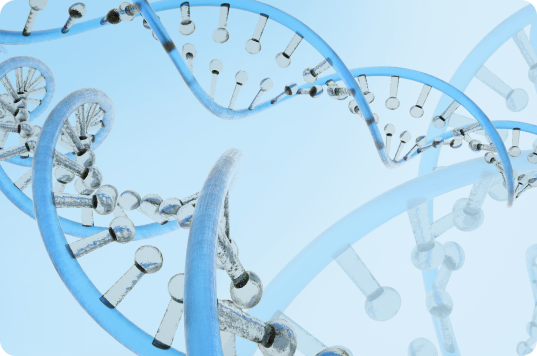

TOP

Synthetic Biology
Synthetic Biology
Synthetic biology is a discipline that combines the observational and analytical methods of the life sciences with the design thinking of engineering, enabling humans to design, modify, and even synthesize biological systems with specific functions from scratch through engineering methods. It is a sub-discipline of biological sciences in the 21st century, which first appeared in two articles in science magazine in 1911, gradually appeared in academic journals and on the Internet in 2000, and was named one of the top ten emerging technologies that will change the world by technology review in 2004.

Synthetic Biology DBTL Cycle

Design
In the field of synthetic biology, the synthesis goal is first defined, covering the functional, characterization and performance requirements for the production of specific compounds, the construction of biological circuits, or the design of task-specific organisms. Subsequently, we select chassis organisms, such as bacteria, mother, mammalian cells, etc., and need to consider growth, metabolism and genetic manipulation. Next, genetic engineering and other tools are used to design and construct genetic circuits or systems to select the appropriate genetic components and combinations, which can be optimized according to biological principles or by computer simulation. Finally, we optimize the design, such as regulating gene expression, optimizing metabolic pathways, and reducing by-products to enhance system efficiency, stability and reliability, and improve the solution through experimental feedback.

Build
Gene synthesis is carried out according to the design scheme, either chemically or biologically, with chemical methods being used for short fragments and biological methods synthesizing long sequences or networks. The synthesized genes are then introduced into the chassis using technologies such as CRISFR-Cas9 to edit the genome. The edited genes are then assembled into a complete line or system by gene cloning, etc. to ensure correctness and completeness - Finally, the constructed biological system or cell is cultured and screened, and the culture and screening conditions are optimized according to experimental needs to obtain functional cells or organisms.
· Eukaryotic/prokaryotic transcriptome sequencing

Test
The constructed biological system or cell should be functionally validated, through experimental assays, biosensors and imaging techniques to ensure that it can achieve the expected functions, such as detecting the yield of target compounds, the signal output of biological circuits, and the phenotypic changes of the organism. At the same time, its performance should be evaluated, including efficiency, stability, specificity, reproducibility, etc. This can be done by comparing different constructs, testing under different conditions, and long-term culture passaging. Based on the test results, the biological system or cell can be optimized and improved in terms of adjusting the gene expression level, changing the gene line structure, optimizing the culture conditions, etc., so as to continuously improve its performance and function by selective generation.
· Full-length 16s, 18s, and ITS amplicon sequencing

Study
Analyze test data to obtain information about biological systems or cells using statistics, bioinformatics, modeling, etc. to understand characteristics and find problems and optimization points. Convert test and analysis results into knowledge, and accumulate experience in design and construction through literature research, documentation, and communication. Feedback the knowledge to the design and construction, and improve it by adjusting the program, changing components, etc. Innovative development based on knowledge, such as developing new lines, systems, applications, exploring principle mechanisms and cross-fertilization.
If you have any questions, please contact us
